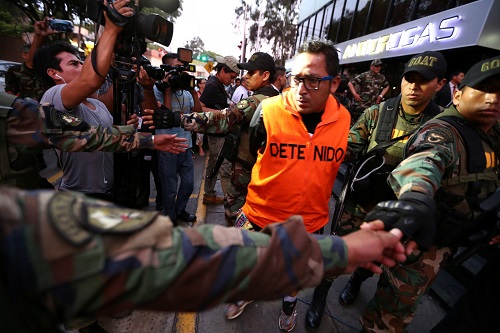Reuters photo
By
Ricardo Swire
Caribbean islands are important financial/transhipment centres in the “Third World” cocaine business. South American countries Bolivia, Colombia and Peru are market leaders, Colombia once lauded the Mecca of cocaine production. The total value of the trio’s white powder export business equals half the global coffee trade. According to Caribbean intelligence statistics Bolivia generates a minimum US$1 billion from cocaine transactions annually. Colombia earns US$2 billion and Peru’s four hundred metric tons provide locally based traffickers with US$8.5 billion for a similar period.
Peruvian internal security data concurs with Caribbean intelligence officials’ analysis which indicates a large amount of drug smuggling revenue is used to buy luxury properties, vehicles and ranches. Underground finances stimulate Peru’s construction industry, financial groups and businesses which disguise money laundering. Guided by intelligence data on January 11, 2017 Peruvian National Police Anti-Drug Office intercepted four thousand five hundred and eight pounds of cocaine, worth US$4 million at point of origin.
The drugs were camouflaged in cans placed on pallets among parcels of Asparagus en route to Amsterdam, where its value multiplied to US$174 million on North Holland streets. Peru’s political influence is also purchased with some tainted cash. Two recent presidents are being investigated for corruption, one connected to drug trafficking. Mexican drug cartels dominate operations in Northern Peru, controlling cocaine movement via Chimbote, Trujillo and Tumbes. Between 2012 and 2017 Peru’s government allocated US$650 million to anti-narcotics operations.
Caribbean internal security intelligence officials recognise infiltration patterns that outlined how some South American traffickers earmarked special regional islands as vital offshore real estate. Untaxed underworld wealth was utilized to establish unique warehousing and banking facilities on these tropical islands. Ongoing collaborated and individual American/Andean counter-drug enforcement strategies have returned the cocaine stream to its original source for alternate routing rather than stop the flow. Interception of the “Atlantic VII,” a two hundred and sixty-seven foot coastal freighter crewed by trans-nationals, sailing under a St Vincent & the Grenadines (SVG) flag, demonstrated law enforcement efforts.
The US Homeland Security Investigations (HSI), Coast Guard (USCG), Customs & Border Protection (CBP) and Customs Enforcement (ICE) operation conducted in the Caribbean Sea seized nine hundred and eighty-nine kilos of cocaine valued US$29 million that was transported aboard the ship. Atlantic VII’s Cuban, Dominican Republic, Ecuadorian, Panamanian and Peruvian crew members were detained. The American federal multi-agency team also impounded a delivery watercraft and another coastal freighter eight miles off Puerto Rico’s coast.
Peru’s national budget provided its Anti-Drug Directorate (DIRANDRO) with US$70 million to counter drugs trafficking. The security forces, tasked with managing intelligence and operational support, are allocated seventy-seven percent. National money laundering countermeasures received US$135 million to police suspected financial schemes. Transnational drug traffickers now function in tandem with Peru’s organized crime groups such as “La Gran Familia.” Reports identified Peru’s incarcerated gang lords, inside two San Juan de Lurigancho prisons, who manage lucrative national extortion rackets.
Ricardo Swire
Ricardo Swire is the Principal Consultant at R-L-H Security Consultants & Business Support Services and writes on a number of important issues.



No Comments Yet!
You can be first to comment this post!